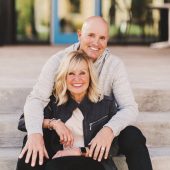Sandy glanced at the caller ID. Mom was calling for the third time today. Later during her counseling session, Sandy emitted a mix of fear and fury. “Why can’t Mom leave me alone to live my own life? She hovers over me like I’m eight years old and don’t know how to make an intelligent decision or run my own life.”
As a married, divorced mother-of-two, Sandy still felt like a little girl. For years, her mother had second-guessed Sandy’s every decision and criticized incessantly. Sometimes Sandy would get angry, but guilt would compel her to pacify her mom. Sandy grew up not trusting her own ideas, thoughts or feelings, usually giving into her mother. Now as an adult, Sandy continues to defer to her mother’s control, even if she initially resists.
When we think of emotionally destructive relationships, we assume that there must be some kind of abuse. It’s true, abusive relationships are always destructive, but other more subtle destructive relationship patterns can be just as lethal.
Over the years in my counseling practice, I have observed five distinct relationship patterns that become destructive. As you read through this list, you might find that your relationship with someone contains one or maybe even all five of these patterns. Please understand that consistently experiencing even one of these patterns not only hurts the relationship but is also destructive to you as well as the other person in your relationship.
1. Where there is any kind of physical, sexual or emotional/verbal abuse.
2. Where one person in the relationship is overprotective and/or overbearing but not necessarily abusive.
3. Where there is deceit, through lying, hiding, pretending, misleading or twisting information to make something or someone appear other than what it is.
4. Where one person is overly dependent upon the other for all their needs to be met.
5. Where there is indifference and/or neglect towards the thoughts, feelings or the well-being of the other in the relationship.
Sandy’s relationship with her mother was destructive to Sandy because she could not grow to be herself. Instead, Sandy bent into the person her mother said she should be. The allowed overbearing and controlling behavior inhibited their mother/daughter relationship from blossoming into a true friendship. Her mother was still trying to “smother” her adult daughter, who alternated between being the compliant little girl and the angry adolescent. As long as this pattern continued, both Sandy and her mom would remain unhealthy and their relationship destructive.
To begin to move toward a healthier relationship, Sandy needed to recognize that the only person she could change or control was Sandy. Next, she had to take full responsibility for her own dependency and deceit (by pretending) and learn how to think her own thoughts, make her own decisions and stand on her own two feet even if her mother disagreed, acted upset or criticized her.
As Sandy becomes healthier, she will have to speak the truth in love and let her mother know that Sandy will manage the details of her life. If she wants advice or an opinion, she’ll ask for it. Even though Sandy could not control whether-or-not her mother would change, Sandy could now grow into the woman God created her to be.




















